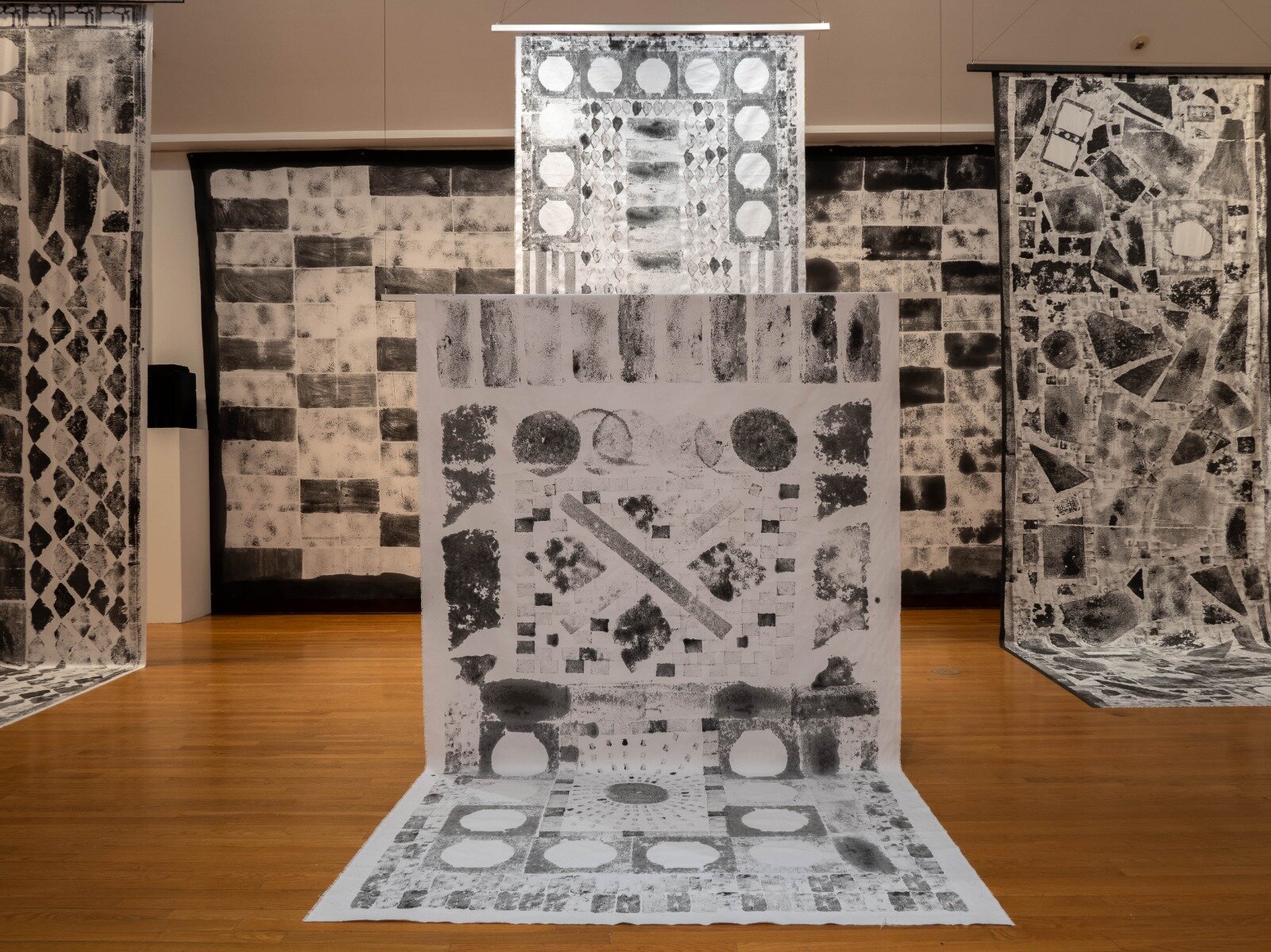FOAM (FutureOfAMaterial) installation, Gomitaku prints on linen and canvas, jute, wood, sumi ink, 2020
FOAM (FutureOfAMaterial) is a printmaking installation that uses found styrofoam as a portal material to create a visual language that engages in our detachment with water, waste and its interconnectivity to a multitude of injustices. FOAM can be seen as part of a self-invented object-oriented ontological regenerative research tool (OOORRT -- an extension of object oriented ontology), that thinks past the limits of environmentalism, with its ties to capitalism, humanism, and heteronormative white supremacy, to begin to create renewed relationships within our shared ecosystem. In fact, FOAM is more of a process, an action, blessing or sacralization, in which a toxic material is ritualistically used to consider equally the future of human, water, land, and animal bodies, while giving meditative space for the toxic ‘immortal’ progeny of plastics that we have created. FOAM unites all bodies while taking responsibility for the messiness of human toxicity.
In an adaptation of the Japanese fish printmaking technique Gyotaku, called “Gomitaku” or “trash impression,” styrofoam replaces the fish as a print material. The resulting mono prints conjure the dark shadow each object casts even as castaways in unseen landscapes, their textured “scales” reflecting back at us the layered impressions of our environmental oppression. The often broken shapes are fragments of larger objects whose phantom pieces remind us of their possible futurity in the stomachs of fish and birds, nestled into folds of a shoreline, or added to the 51 trillion microplastic particles floating in the sea.
The prints are larger than the viewer and architectural in their presentation, asking the viewer to see these fragments accumulating as monuments that are currently being built by our extraction and consumption. The works also reference the watery habitats from which they were poached, hanging like waterfalls, floating in the air and sometimes existing in pools of printed matter on the floor that intersect with one another and go off on tangents like tributaries. These scenic “streams of consciousness” give visibility to the present that we currently ignore, the potential futurity of these objects that we are in denial of while also connecting us to their past, which we most often want to conveniently forget.











Check out the 3D Virtual Exhibition
An artist talk by sTo Len on the installation FOAM and his process of research and discovery through printmaking.
An interview with sTo Len on his art practice and current work in the exhibition

